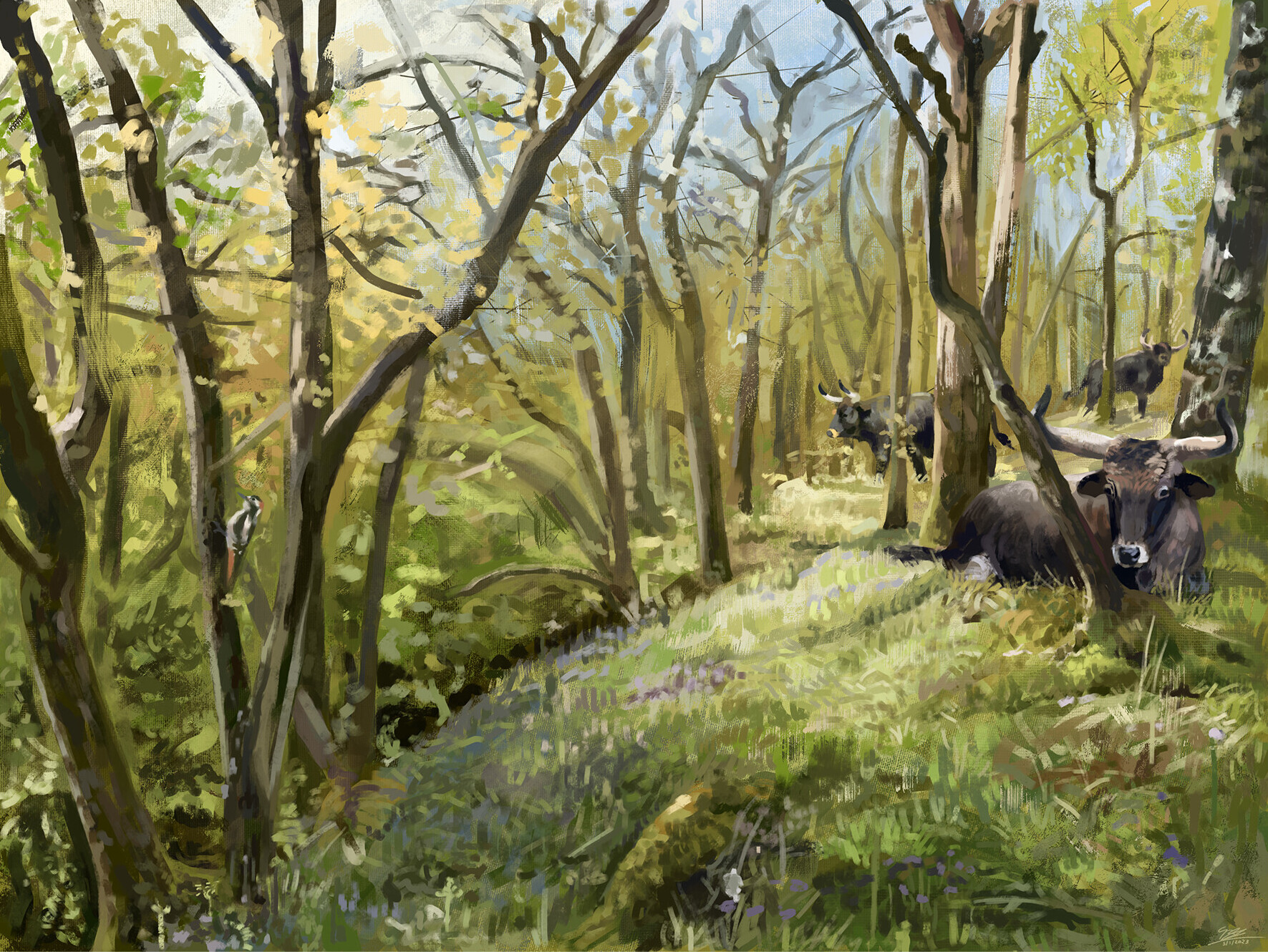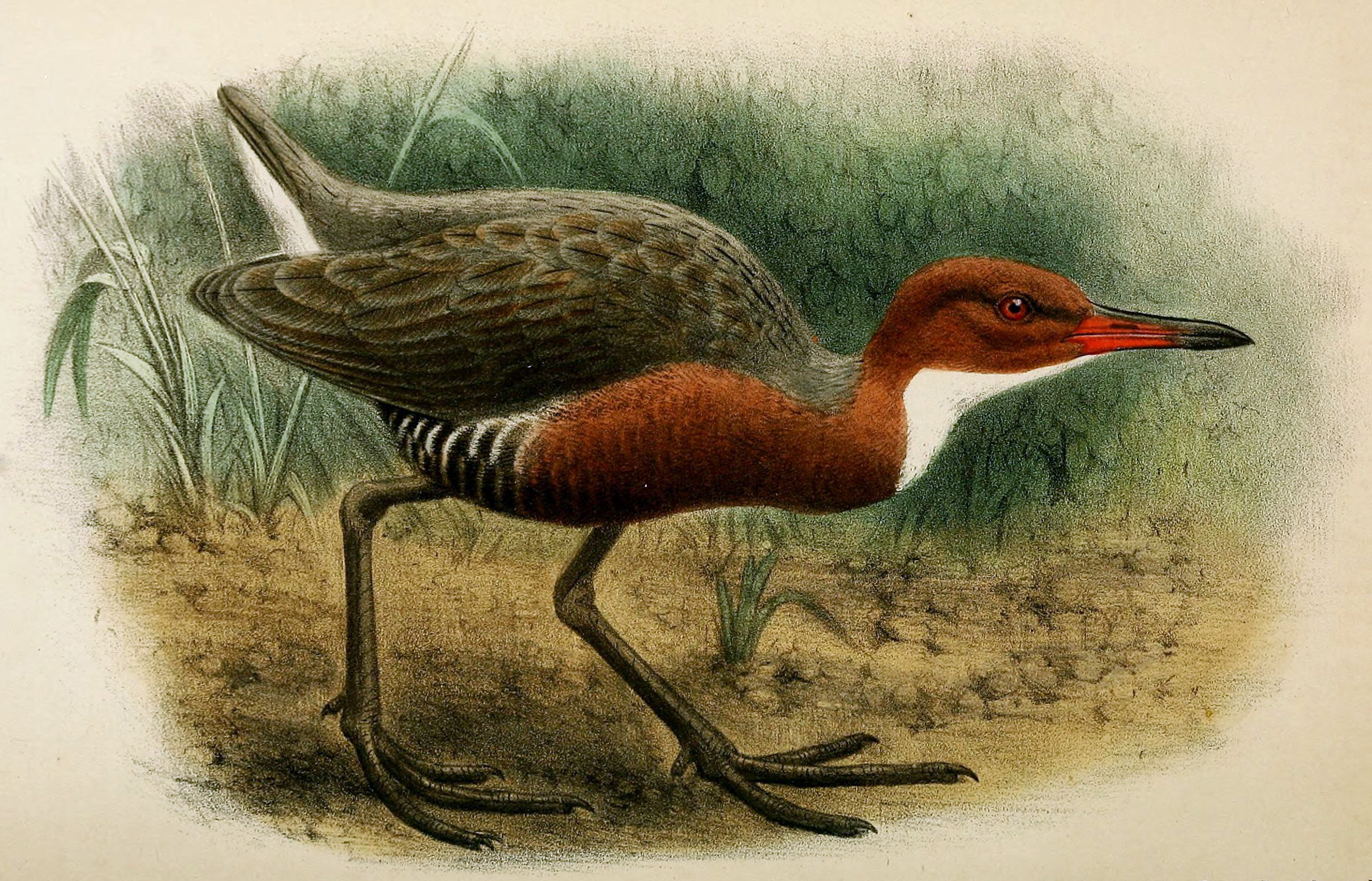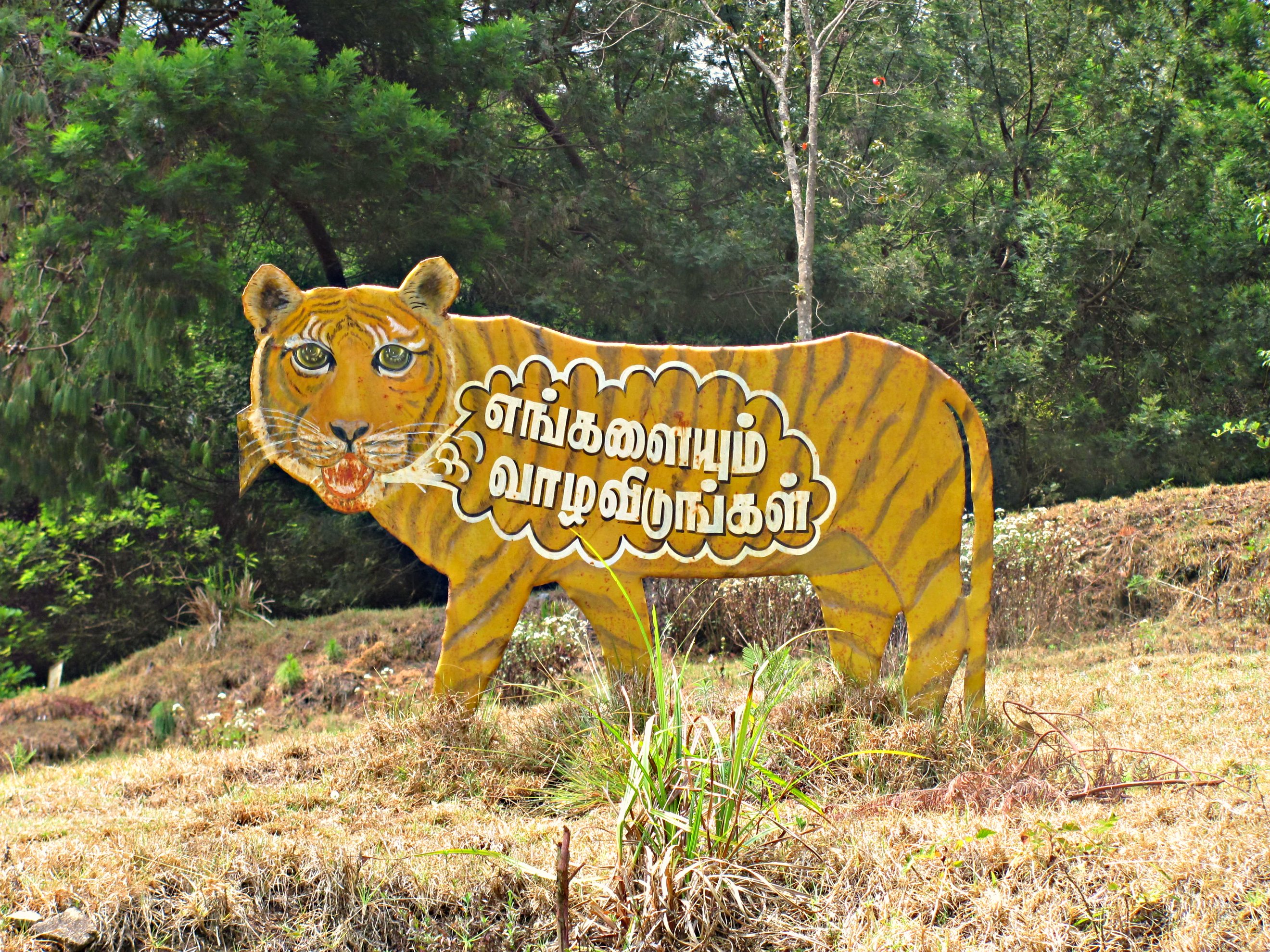|
De-extinct
De-extinction (also known as resurrection biology, or species revivalism) is the process of generating an organism that either resembles or is an Extinction, extinct organism. There are several ways to carry out the process of de-extinction. Cloning is the most widely proposed method, although genome editing and selective breeding have also been considered. Similar techniques have been applied to certain endangered species, in hopes to boost their genetic diversity. The only method of the three that would provide an animal with the same genetic identity is cloning. There are benefits and drawbacks to the process of de-extinction ranging from technological advancements to ethical issues. Methods Cloning Cloning is a commonly suggested method for the potential restoration of an extinct species. It can be done by extracting the nucleus from a preserved cell from the extinct species and swapping it into an egg, without a nucleus, of that species' nearest living relative. The egg can ... [...More Info...] [...Related Items...] OR: [Wikipedia] [Google] [Baidu] |
Cloning
Cloning is the process of producing individual organisms with identical genomes, either by natural or artificial means. In nature, some organisms produce clones through asexual reproduction; this reproduction of an organism by itself without a mate is known as parthenogenesis. In the field of biotechnology, cloning is the process of creating cloned organisms of Cell (biology), cells and of DNA fragments. The artificial cloning of organisms, sometimes known as reproductive cloning, is often accomplished via somatic-cell nuclear transfer (SCNT), a cloning method in which a viable embryo is created from a somatic cell and an egg cell. In 1996, Dolly (sheep), Dolly the sheep achieved notoriety for being the first mammal cloned from a somatic cell. Another example of artificial cloning is molecular cloning, a technique in molecular biology in which a single living cell is used to clone a large population of cells that contain identical DNA molecules. In bioethics, there are a vari ... [...More Info...] [...Related Items...] OR: [Wikipedia] [Google] [Baidu] |
Aurochs
The aurochs (''Bos primigenius''; or ; pl.: aurochs or aurochsen) is an extinct species of Bovini, bovine, considered to be the wild ancestor of modern domestic cattle. With a shoulder height of up to in bulls and in cows, it was one of the largest herbivores in the Holocene; it had massive elongated and broad horns that reached in length. The aurochs was part of the Pleistocene megafauna. It probably evolved in Asia and migrated west and north during warm interglacial periods. The oldest-known aurochs fossils date to the Middle Pleistocene. The species had an expansive range spanning from Western Europe and North Africa to the Indian subcontinent and East Asia. The distribution of the aurochs progressively contracted during the Holocene due to habitat loss and hunting, with the last known individual dying in the Jaktorów forest in Poland in 1627. There is a long history of interaction between aurochs and humans, including archaic hominins like Neanderthals. The aurochs ... [...More Info...] [...Related Items...] OR: [Wikipedia] [Google] [Baidu] |
White-throated Rail
The white-throated rail (''Dryolimnas cuvieri'') or Cuvier's rail, is a species of bird in the family Rallidae. Distribution It is found in the Comoros, Madagascar, Mayotte, and Seychelles. Taxonomy The nominate subspecies is found in Madagascar. A flightless subspecies (sometimes considered a distinct species), ''Dryolimnas (cuvieri) aldabranus'' (Aldabra rail), inhabits Aldabra, while the semi-flightless subspecies ''D. c. Abbott'' (Assumption rail) from Assumption Island went extinct in the early 20th century due to introduced predators. A fourth extinct flightless subspecies or descendant species is known from fossil remains on Aldabra, and anatomically was almost identical to the Aldabra rail. This subspecies was wiped out by rising sea levels during the Pleistocene, but the atoll was recolonized by the white-throated rail after it resurfaced; this population evolved in a very similar way to the extinct subspecies, eventually evolving into the modern Aldabra rail. This ... [...More Info...] [...Related Items...] OR: [Wikipedia] [Google] [Baidu] |
Taurus Bull MBD
Taurus is Latin for 'bull' and may refer to: * Taurus (astrology), the astrological sign ** Vṛṣabha, in vedic astrology * Taurus (constellation), one of the constellations of the zodiac * Taurus (mythology), one of two Greek mythological characters named Taurus * ''Bos taurus'', a species of cattle * Taurus cattle, a breed of cattle Geography * Taurus Mountains, a range in modern-day Turkey * Montes Taurus, a mountainous region on the Moon * Taurus Mountain, a summit in Canada People * Tarrus Riley, reggae singer who initially worked as a deejay under the name Taurus * Black Taurus (born 1987), Mexican wrestler also known as Taurus * Gran Guerrero (born 1993), Mexican wrestler formerly known as Taurus * Polo G (Taurus Bartlett, born 1999), American rapper Romans * Titus Statilius Taurus, the name of a line of four Roman senators * Titus Statilius Taurus Corvinus, Roman consul in 45 * Lucius Calvenus Taurus, 2nd century Middle Platonist philosopher * Taurus Volusian ... [...More Info...] [...Related Items...] OR: [Wikipedia] [Google] [Baidu] |
Critically Endangered
An IUCN Red List critically endangered (CR or sometimes CE) species is one that has been categorized by the International Union for Conservation of Nature as facing an extremely high risk of extinction in the wild. As of December 2023, of the 157,190 species currently on the IUCN Red List, 9,760 of those are listed as critically endangered, with 1,302 being possibly extinct and 67 possibly extinct in the wild. The IUCN Red List provides the public with information regarding the conservation status of animal, fungi, and plant species. It divides various species into seven different categories of conservation that are based on habitat range, population size, habitat, threats, etc. Each category represents a different level of global extinction risk. Species that are considered to be critically endangered are placed within the "Threatened" category. As the IUCN Red List does not consider a species extinct until extensive targeted surveys have been conducted, species that a ... [...More Info...] [...Related Items...] OR: [Wikipedia] [Google] [Baidu] |
Ivory
Ivory is a hard, white material from the tusks (traditionally from elephants) and Tooth, teeth of animals, that consists mainly of dentine, one of the physical structures of teeth and tusks. The chemical structure of the teeth and tusks of mammals is the same, regardless of the species of origin, but ivory contains structures of mineralised collagen. The trade in certain teeth and tusks other than elephant is well established and widespread; therefore, "ivory" can correctly be used to describe any mammalian teeth or tusks of commercial interest which are large enough to be carved or scrimshawed. Besides natural ivory, ivory can also be produced synthetically, hence (unlike natural ivory) not requiring the retrieval of the material from animals. Tagua nuts can also be carved like ivory. The trade of finished goods of ivory products has its origins in the Indus Valley. Ivory is a main product that is seen in abundance and was used for trading in Harappan civilization. Finished iv ... [...More Info...] [...Related Items...] OR: [Wikipedia] [Google] [Baidu] |
Elephant
Elephants are the largest living land animals. Three living species are currently recognised: the African bush elephant ('' Loxodonta africana''), the African forest elephant (''L. cyclotis''), and the Asian elephant ('' Elephas maximus''). They are the only surviving members of the family Elephantidae and the order Proboscidea; extinct relatives include mammoths and mastodons. Distinctive features of elephants include a long proboscis called a trunk, tusks, large ear flaps, pillar-like legs, and tough but sensitive grey skin. The trunk is prehensile, bringing food and water to the mouth and grasping objects. Tusks, which are derived from the incisor teeth, serve both as weapons and as tools for moving objects and digging. The large ear flaps assist in maintaining a constant body temperature as well as in communication. African elephants have larger ears and concave backs, whereas Asian elephants have smaller ears and convex or level backs. Elephants are scatter ... [...More Info...] [...Related Items...] OR: [Wikipedia] [Google] [Baidu] |
Competitive Exclusion Principle
In ecology, the competitive exclusion principle, sometimes referred to as Gause's law, is a proposition that two species which compete for the same limited resource cannot coexist at constant population values. When one species has even the slightest advantage over another, the one with the advantage will dominate in the long term. This leads either to the extinction of the weaker competitor or to an evolutionary or behavioral shift toward a different ecological niche. The principle has been paraphrased in the maxim "complete competitors cannot coexist". History The competitive exclusion principle is classically attributed to Georgy Gause, although he actually never formulated it. The principle is already present in Darwin's theory of natural selection. Throughout its history, the status of the principle has oscillated between ''a priori'' ('two species coexisting ''must'' have different niches') and experimental truth ('we find that species coexisting do have different niches' ... [...More Info...] [...Related Items...] OR: [Wikipedia] [Google] [Baidu] |
Flagship Species
In conservation biology, a flagship species is a species chosen to raise support for biodiversity conservation in a given place or social context. Definitions have varied, but they have tended to focus on the strategic goals and the socio-economic nature of the concept, to support the marketing of a conservation effort. The species need to be popular, to work as symbols or icons, and to stimulate people to provide money or support. Species selected since the idea was developed in 1980s include widely recognised and charismatic species like the black rhinoceros, the Bengal tiger, and the Asian elephant. Some species such as the Chesapeake blue crab and the Pemba flying fox, the former of which is locally significant to Northern America, have suited a cultural and social context. Although animal species that can be described as "charismatic megafauna" are frequently the flagship species for a protected ecosystem, large, dominant plant species sometimes serve this role as well, for e ... [...More Info...] [...Related Items...] OR: [Wikipedia] [Google] [Baidu] |
Egg Cell
The egg cell or ovum (: ova) is the female Reproduction, reproductive cell, or gamete, in most anisogamous organisms (organisms that reproduce sexually with a larger, female gamete and a smaller, male one). The term is used when the female gamete is not capable of movement (non-motile). If the male gamete (sperm) is capable of movement, the type of sexual reproduction is also classified as oogamous. A nonmotile female gamete formed in the oogonium of some algae, fungi, oomycetes, or bryophytes is an oosphere. When fertilized, the oosphere becomes the oospore. When egg and sperm fuse together during fertilisation, a diploid cell (the zygote) is formed, which rapidly grows into a new organism. History While the non-mammalian animal egg was obvious, the doctrine ''ex ovo omne vivum'' ("every living [animal comes from] an egg"), associated with William Harvey (1578–1657), was a rejection of spontaneous generation and preformationism as well as a bold assumption that mammals als ... [...More Info...] [...Related Items...] OR: [Wikipedia] [Google] [Baidu] |
Baiji
The baiji (''Lipotes vexillifer'') is a probably extinct species of freshwater dolphin native to the Yangtze river system in China. It is thought to be the first dolphin species driven to extinction due to the impact of humans. This dolphin is listed as "critically endangered: possibly extinct" by the IUCN, has not been seen in 20 years, and several surveys of the Yangtze have failed to find it. The species is also called the Chinese river dolphin, Yangtze river dolphin, Yangtze dolphin, and whitefin dolphin. The genus name ''Lipotes'' means "left behind" and the species epithet ''vexillifer'' means "flag bearer". It is nicknamed the "Goddess of the Yangtze" and was regarded as the goddess of protection by local fishermen and boatmen. It is not to be confused with the Chinese white dolphin (''Sousa chinensis'') or the finless porpoise (''Neophocaena phocaenoides''). This is the only species in the genus ''Lipotes''. The baiji population declined drastically in decades as ... [...More Info...] [...Related Items...] OR: [Wikipedia] [Google] [Baidu] |
Functional Extinction
Functional extinction is the extinction of a species or other taxon such that: #It disappears from the fossil record, or historic reports of its existence cease; #The reduced population no longer plays a significant role in ecosystem function; #The population is no longer viable. There are no individuals able to reproduce, or the small population of breeding individuals will not be able to sustain itself due to inbreeding depression and genetic drift, which leads to a loss of fitness. In plant populations, self-incompatibility mechanisms may cause related plant specimens to be incompatible, which may lead to functional extinction if an entire population becomes self-incompatible. This does not occur in larger populations. In polygynous populations, where only a few males leave offspring, there is a much smaller reproducing population than if all viable males were considered. Furthermore, the successful males act as a genetic bottleneck, leading to more rapid genetic drift ... [...More Info...] [...Related Items...] OR: [Wikipedia] [Google] [Baidu] |







